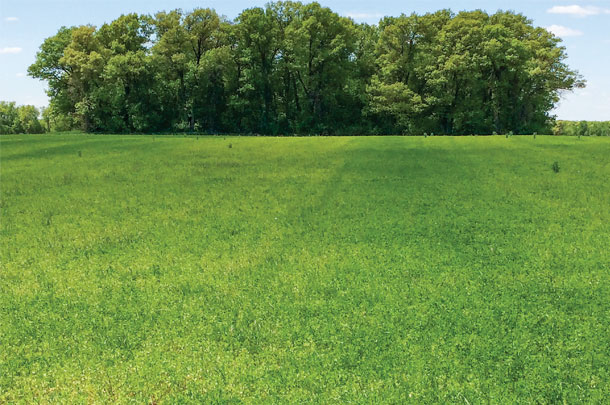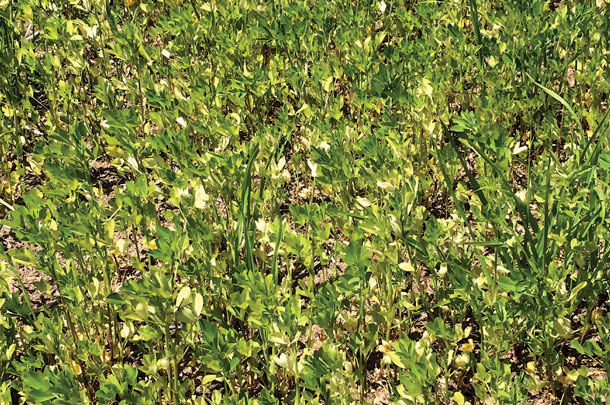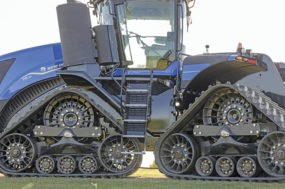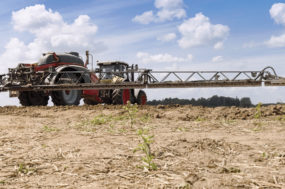Stagnant alfalfa yields have been lamented for many years, and I consistently hear growers say their yields today are no better than “X” years ago. Why is this? As a former crop consultant in a predominantly dairy area, I saw this yield stagnation occur over 30 years of scouting alfalfa fields.
Alfalfa breeders are continually releasing new varieties that carry better winter hardiness, improved cut recovery times, improved disease resistance and higher fiber digestibility. Yet yields are mostly stagnant, or are slowly increasing, compared to corn yield growth, for example. Much of this flat yield curve can be attributed to the fact that alfalfa is a perennial crop with long breeding cycles, breeders selecting for numerous other desirable traits and “complicated genetic factors,” according to the National Alfalfa and Forage Alliance. However, there’s more to flat yields than just breeding.
Flat yields in alfalfa – common reasons
1. Wheel traffic
Some of alfalfa’s yield potential is lost to wheel traffic. I cringe when I see semi-trucks being filled by big choppers in the field. These trucks usually have over-the-road tires aired to 95 psi. That’s 95 pounds per square inch rolling over alfalfa crowns and compacting the soil multiple times per season. I have experienced difficulty pushing a soil test probe into an alfalfa field even when there is soil moisture.
2. Quality over quantity
Another contributing factor to the yield drag is due to the constant push to maximize quality. For example, alfalfa growers are cutting up to five times per season in the upper Midwest, leaving the plant little time to adequately rebuild root sugars and starch.
3. Incomplete fertilization
In many cases, the flat yield curve is due to growers not keeping up with phosphorus (P) and potassium (K) fertilization protocols.
The reasons listed above may be commonly known among growers, but one significant factor that might go unnoticed when evaluating stagnant yields is the presence of inadequate sulfur.
Importance of sulfur
Sulfur application is easy for many growers to overlook, or completely leave out, as they try to trim costs, unaware of its critical role in producing a high-quality alfalfa crop. For much of my crop consulting career, experts in the field, including myself, were slow to recognize the impact of the rapid decrease in atmospheric (dissolved in rain) sulfur and never observed a sulfur deficiency. But that approach has dramatically changed. Today, as a company agronomist, I routinely observe visible sulfur deficiency in alfalfa fields across many states. In some fields it’s subtle, and in others it’s dramatic, like those depicted in Photo 1 and 2.

Overview of a sulfur-deficient alfalfa field with yellow coloring. Photo courtesy of AgroLiquid.

A close-up of the brightly colored yellow leaves depicting sulfur deficiency. Photo courtesy of AgroLiquid.
One of the primary reasons alfalfa is widely used as a forage crop is for its high protein content. Dairy-quality alfalfa will be 20% or higher in protein, depending on cut timing. This high protein significantly reduces the amount of supplemental protein a dairy farm must buy. To produce this amount of protein, a plant must have sulfur readily available.Sulfur works in conjunction with nitrogen for the formation of amino acids that make up protein, so the higher the plant protein content, the more sulfur the plant requires, although the ratio of nitrogen-to-sulfur varies quite a bit depending on the crop. In alfalfa specifically, the International Plant Nutrition Institute states the ratio is 9-1. Sulfur is a critical component in the amino acids that comprise protein, so the protein content of alfalfa will be lower when a shortage of sulfur occurs in the plant. Interestingly, in my own research, I have found a strong correlation between applied sulfur and overall forage quality, not just protein.
What does this mean for fertilization?
For every dry matter ton of alfalfa growers remove, they are taking approximately 51 pounds per acre of nitrogen (fortunately supplied by rhizobia) and nearly 6 pounds of sulfur. But keep in mind that’s the amount actually taken up by the plant.
What we know – no fertilizer is 100% efficient:
- Plant roots intersect a surprisingly small percentage of the soil in a field, meaning they are able to take up only a small amount of the potentially available fertilizer present.
- Sulfur in the plant-available form of sulfate is subject to leaching.
- Uptake from the soil fluctuates widely depending on soil moisture, temperature, pH and root zone oxygen levels. Therefore, we must apply considerably more sulfur than what the actual removal is.
Does enough sulfur really affect quality? Here’s one example from my own research to show it does.
On two fields, one of which is shown in the accompanying photos, we split the fields in half, with one half receiving a readily available liquid sulfur product applied as a foliar spray at 10 inches in height and the other half receiving a higher sulfur rate applied as dry ammonium sulfate (AMS).
When the field was cut approximately 10 days later (rain had likely not fully dissolved the AMS), the alfalfa from the foliar-liquid-sulfur-treated area was 11% higher in available crude protein with 14.4% better acid detergent fiber (ADF), 18.7% better amylase neutral detergent fiber (aNDF), 9.9% better 48-hour neutral detergent fiber digestibility (NDFD) and 32.1% better relative feed quality (RFQ).
Understanding the characteristics of the sulfur fertilizer growers use is important. Gypsum, AMS, elemental and foliar all can work if used correctly. Bottom line: Alfalfa growers need to be aware of potential sulfur deficiencies and consider additional application, as it could have a direct impact on their yield performance and profitability.









